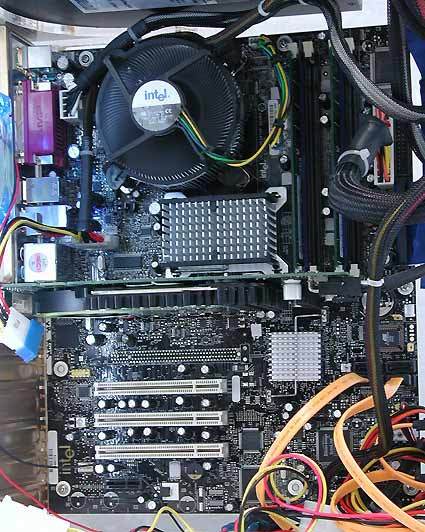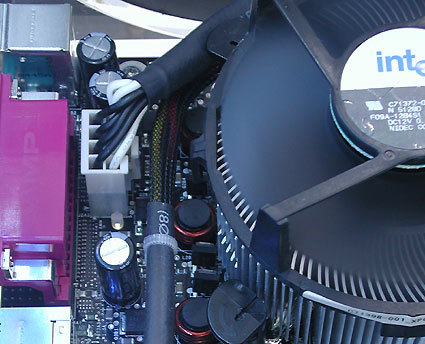Dual Core Stress Test: AMD vs. Intel
Log Book: Intel Sans Hyperthreading - New Results From DivX
Wednesday, June 15: After nearly a week of running our stress tests, we decided to restart our benchmarks yesterday. All values were reset to zero, and on the Intel system we also disabled hyperthreading. The reason? We and our readers are exceedingly interested in understanding why encoding DivX videos takes so terribly long to complete. Although process prioritization in the operating system may bear some responsibility, we can't help but think that some part stems from the processor architecture, or perhaps that hyperthreading might account for the discrepancy.
We had to switch to the Intel Desktop Board D955XBK, because we couldn't get the ASUS P5WD2 board to boot with HT disabled.
Dual-Core CPUs won't work with the 8-pin EPS connector hooked up, which brings the TurboCool 850 SSI Power Supply into play.
At the same time we were able to clear up an entirely different question: namely, would the Pentium 840 Extreme Edition be required, or could its lesser sibling, the Pentium D 840, do the job? Of the various dual-core CPUs, only the Extreme Edition delivers hyperthreading, though the Pentium also incorporates a true dual core.
In reviewing the benchmarks our surprise is complete: Intel's high performance at DivX conversion is indeed attributable to hyperthreading. Although our initial results showed the Intel HT system breezing past the AMD system at 13 times its speed, AMD pulls ahead of the HT-free Intel processor at roughly three times faster. Even when running the Lame encoder - where Intel had also been faster - the AMD system pulled into the lead.
This also demonstrates that when numerous CPU-intense applications must run in parallel, Intel's hyperthreading can deliver immense performance boosts. As far back as 2002, we published an article that reported similiar results . In that article, we compared a Pentium 4 HT at 3.06 GHz to a vanilla Pentium 4 at 3.2 GHz running the same set of applications, and the ability to execute multiple threads in parallel made all the difference.
There's nothing negative to report about the stability of either system. Both have run without a hitch since we restarted the stress test, thus giving us a great opportunity to compare their performance.
Get Tom's Hardware's best news and in-depth reviews, straight to your inbox.
In the next few days, we'll change our focus. Instead of covering parallel execution of multiple applications, we'll dig into the computing capabilities of these CPUs with only a single application running. Recall that our overall goal is to determine which platform is best-suited for a variety of uses.
Current page: Log Book: Intel Sans Hyperthreading - New Results From DivX
Prev Page Log Book: Sans HT, AMD Beats Intel Next Page Tuesday, June 14 Update
